Pula General Hospital Celebrates Clean Hospitals
Learn how Pula General Hospital in Croatia championed infection prevention and environmental hygiene and celebrated Clean Hospitals Day to honor cleaning staff and promote advanced practices for exceptional patient care and safety.
Clean Hospitals Day is celebrated by General Hospital Pula in Croatia.
(Image courtesy of Martina Močenić)
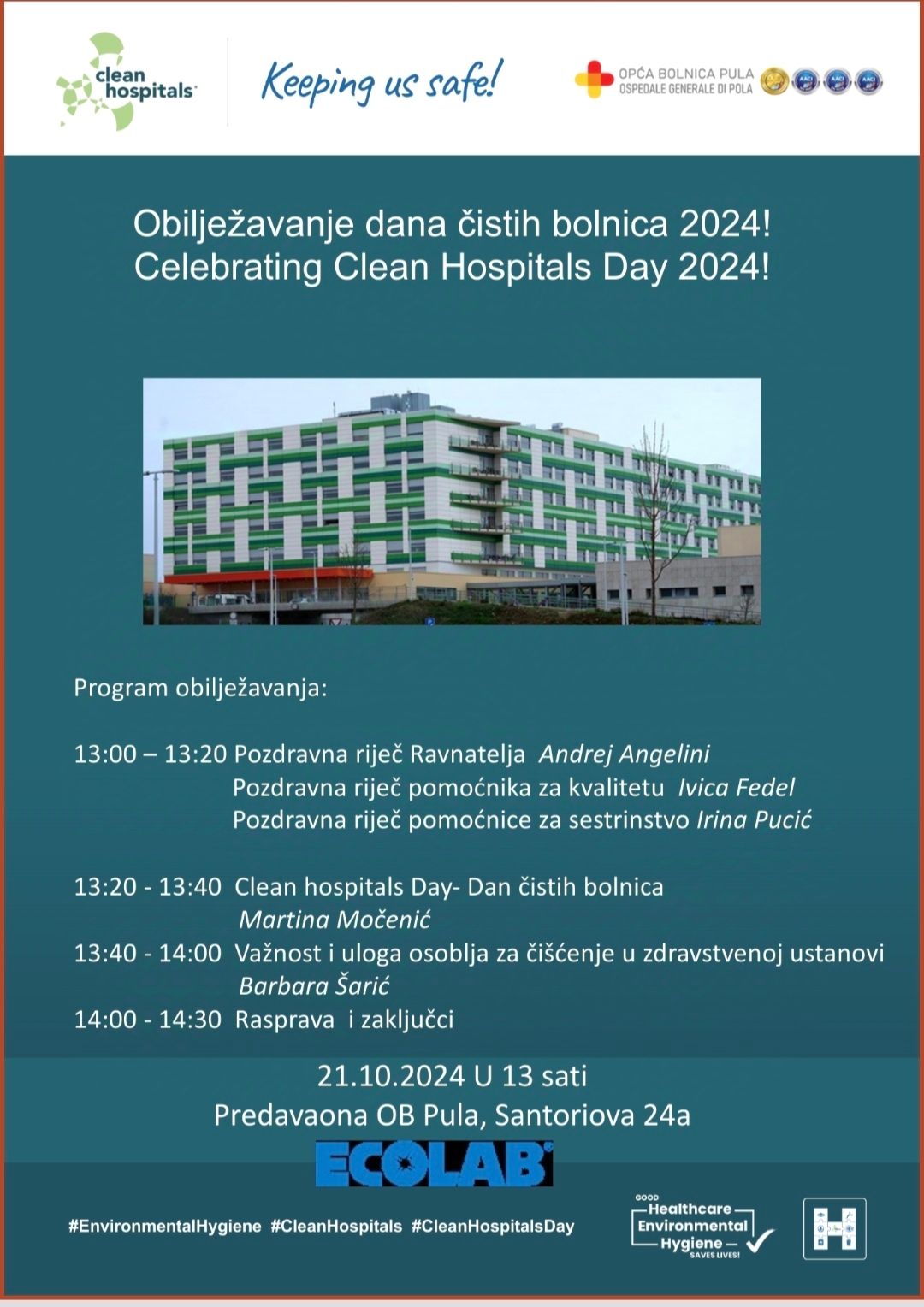
Nestled in the picturesque Istrian peninsula of Croatia, General Hospital Pula (GH Pula) is the largest health care facility in Istria County. Serving over 210,000 residents—and double that during the bustling tourist season—the hospital is renowned for its state-of-the-art medical technology and dedication to patient safety.
In 2024, GH Pula celebrated Clean Hospitals Day for the first time on October 20, 2024. The initiative was led by Martina Močenić, who has been an infection control nurse at the General Hospital Pula, Croatia, for 9 years. Since 2019, she has been the chair of the Society for the Prevention and Control of Healthcare-Associated Infections in the Croatian Nurses Association. Since 2022, she has been a lecturer at the Faculty of Medicine, Juraj Dobrila University Pula, Croatia. She is also a PhD candidate at Malmö University Sweden at the Faculty of Health and Society.
General Hospital Pula celebrates Clean Hospitals Day in Croatia.
(Image courtesy of Martina Močenić)
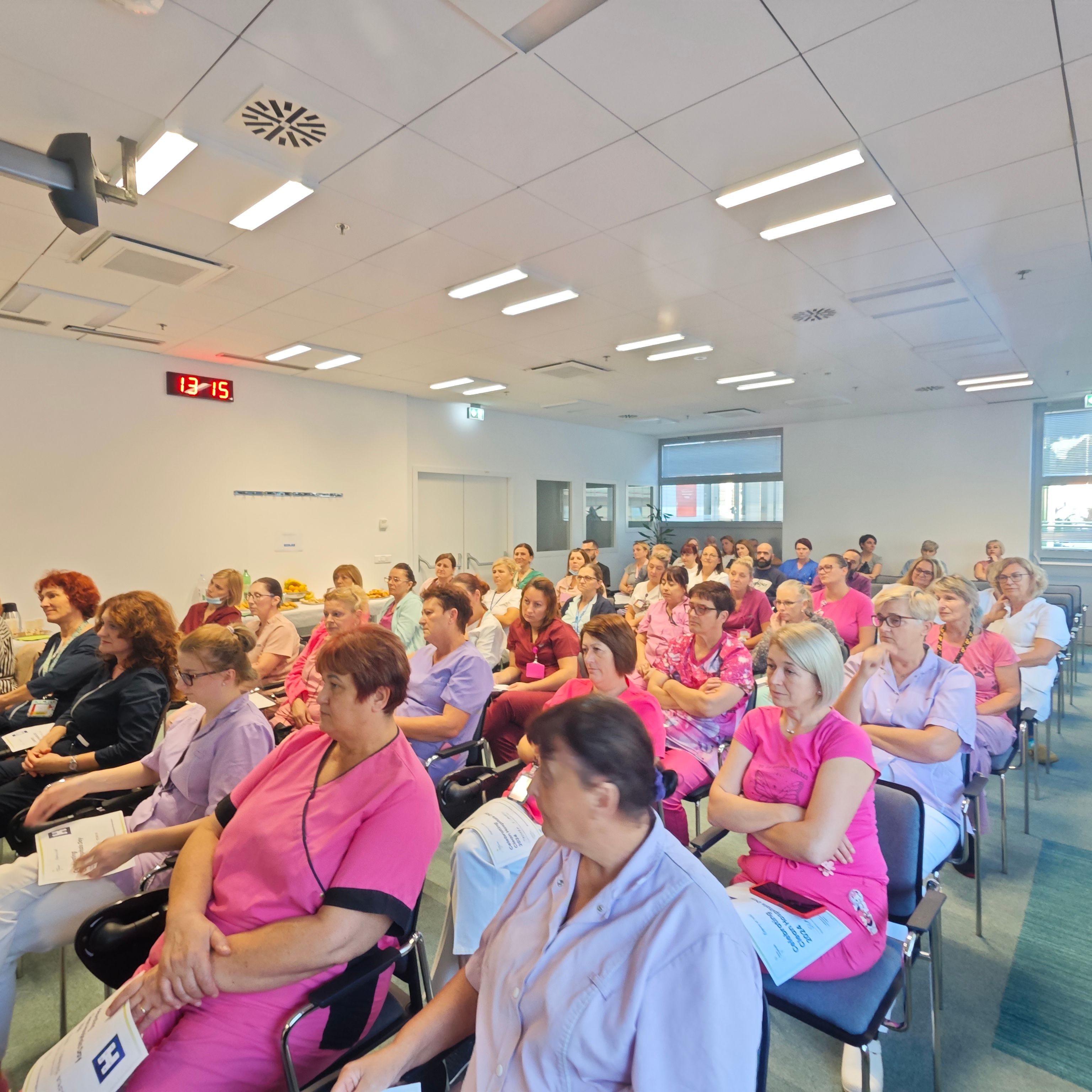
To learn more, Infection Control Today® (ICT®) asked Močenić to describe the event.
ICT: Where are you located? Please tell our readers about your facility.
Martina Močenić, MSN, PhD Candidate: The Republic of Croatia is a European country located on the border between Central, South, and Southeast Europe. Istria is the largest Croatian and Adriatic peninsula. It is in the western part of Croatia, on the northern part of the Adriatic Sea. The largest city in Istria County, Pula, is in the southwestern part of the Istrian peninsula in a well-protected bay where the hospital is located. The Pula General Hospital (GH) is the central and largest health care facility in Istria County. More than 1,300 people are employed there. The region has more than 210,000 inhabitants, but this number doubles during the tourist season. Every year, around 6,300 modern surgical procedures are performed, around 17,000 patients from all over Istria County are treated as inpatients, and over 860,000 people visit the polyclinic every year. The hospital performs the most complex and modern diagnostic and therapeutic procedures using state-of-the-art medical technology.
Clean Hospitals Day is celebrated by General Hospital Pula in Croatia.
(Image courtesy of Martina Močenić)
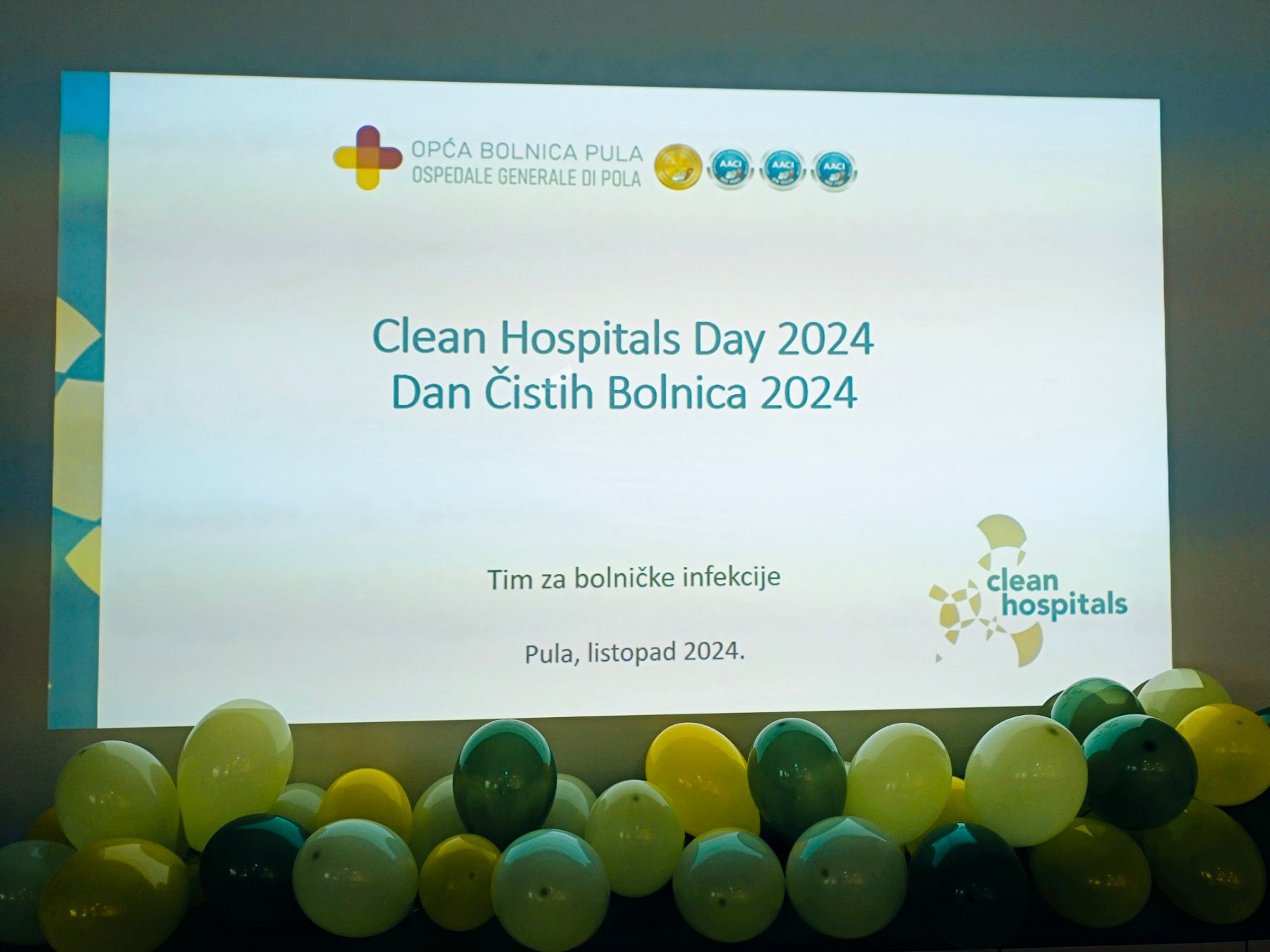
Today, the hospital employs around 280 doctors and 600 nurses. It has 432 hospital beds spread over a total of 10 medical departments.
The quality policy of Pula GH aims to provide innovative, consistent, and continuous health care with added value in accordance with the high standards of modern medicine and to promote the process of continuous improvement of quality services, patient safety, and the creation of a positive climate of teamwork and trust.
The mission of GH Pula is to confirm GH Pula as a clinical center for health and scientific activity for the satisfaction of patients and employees.
The vision of GH Pula is to become a medically and scientifically dynamic institution focused on progress and excellence in all areas of activity to provide patients with high-quality health care in line with modern medicine's trends and ensure excellent transfer of knowledge.
Clean Hospitals Day is celebrated by General Hospital Pula in Croatia.
(Image courtesy of Martina Močenić)
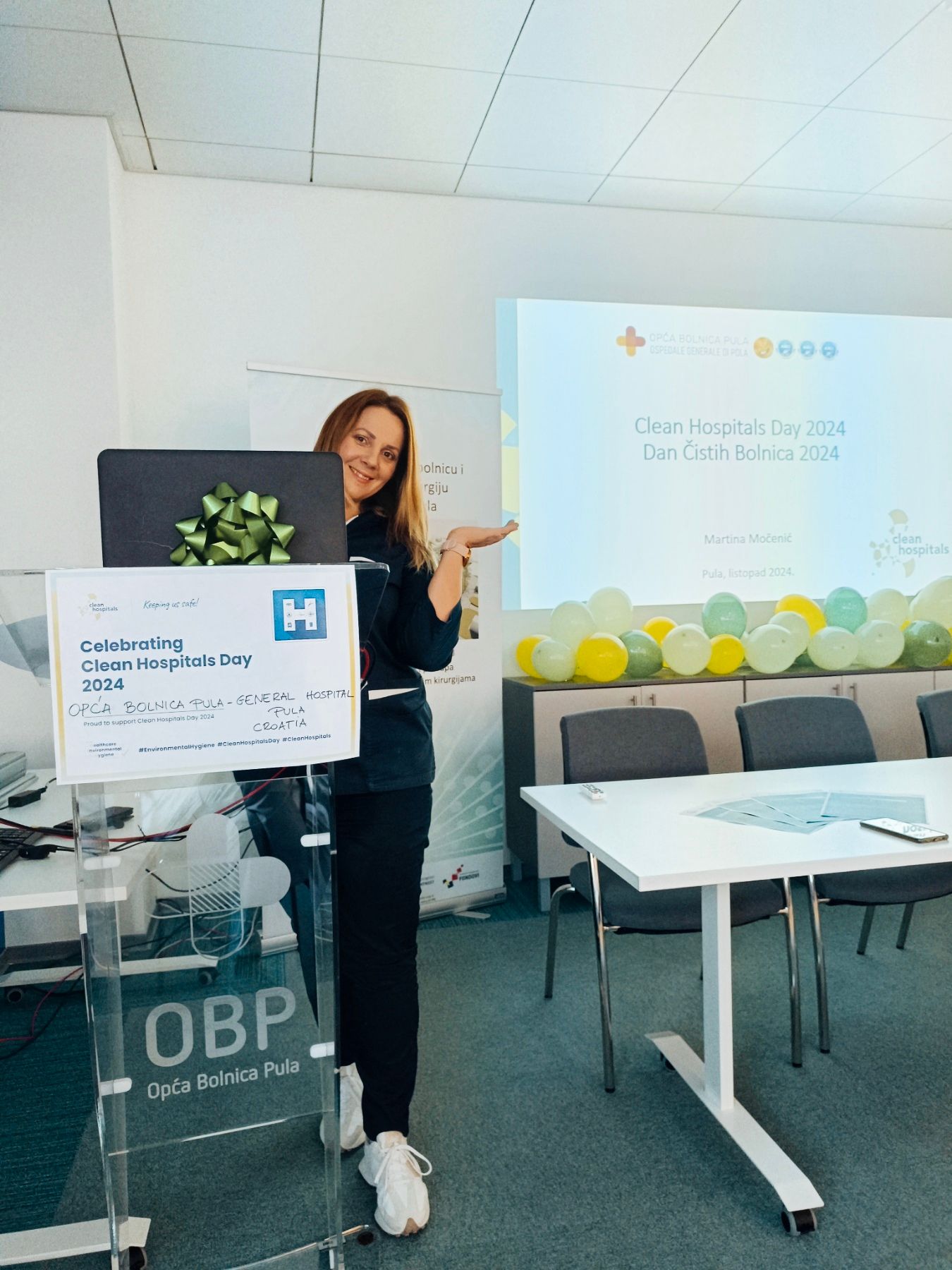
ICT: When and why did you join the Clean Hospitals initiative?
MM: My path to infection control began in 2013, when I completed additional training in Infection prevention and control at the Faculty of Medicine in Zagreb, as a head nurse in the intensive care unit (ICU) to implement preventive measures and reduce health care-associated infections (HCAIs) in the ICU. Due to the measures implemented and the reduction of HCAIs, I had a strong wish to start working in the position of infection control nurse (ICN). Still, I needed to wait because the administration thought that I was too young and that I could give my knowledge and energy to another job, while ICN was perceived as a person who is close to retirement and has an easier job. But I was so persistent until I got a new contract for the position of ICN in the middle of 2015, and I just wanted to change the view and to put on “infection prevention glasses” to all important decisions-makers in [the] hospital.
Clean Hospitals Day is celebrated by General Hospital Pula in Croatia.
(Image courtesy of Martina Močenić)
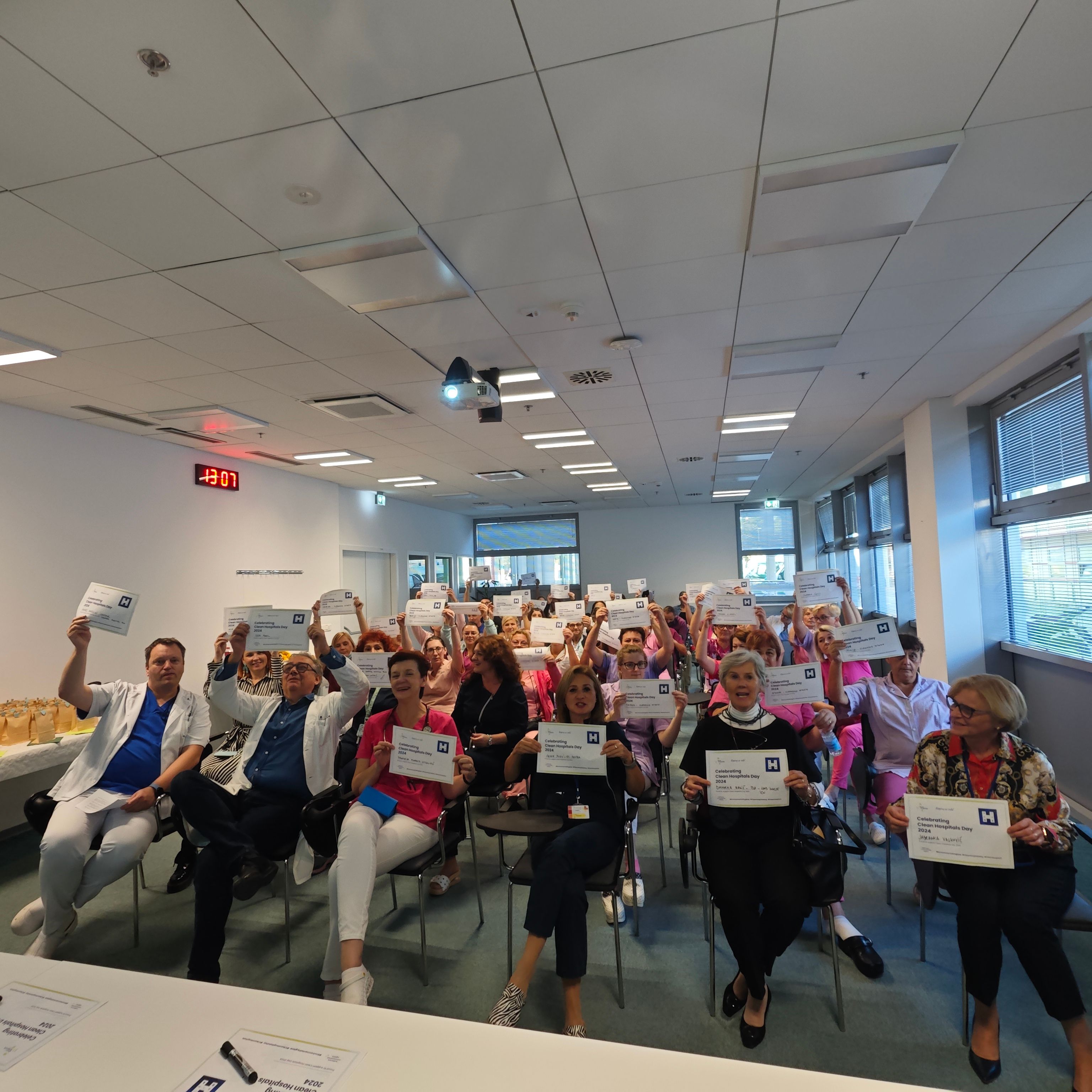
The first focus of the Infection control team was to implement the World Health Organization’s (WHO's) multimodal hand hygiene strategy. We have been actively working for years, and during 2020, we decided to apply for the European Hand Hygiene Excellence Awards and won the award in 2021. Professor Didier Pittet, MD, MS, CBE, who was known to me at that time as the world's leading expert on hand hygiene, was a person from books, papers, photos, and videos, but his positive energy that spread around the world would soon also reach me. I was so excited when my hospital won the award in 2021. While accepting it at the International Consortium For Prevention & Infection Control conference in Switzerland later that year, I met Professor Pittet and Alexandra Peters, PhD. I started to work together with them as a part of team in the educational program Train the Trainers (TTT) in Hand Hygiene and the first TTT on Healthcare Environmental Hygiene held in Kuala Lumpur, Malaysia, in January 2024.
In 2023, I enrolled in a PhD program as an international student at Malmö University in Sweden where I used HEHSAF, which I translated and validated into the Croatian language, as a tool to research the level of health care environmental hygiene (HEH) in Croatian hospital and clinics. After receiving data from the quantitative study, a qualitative study will be conducted, and the final goal will be to implement the new/transposable model for cleaning in GH Pula.
General Hospital Pula celebrates Clean Hospitals Day in Croatia.
(Image courtesy of Martina Močenić)
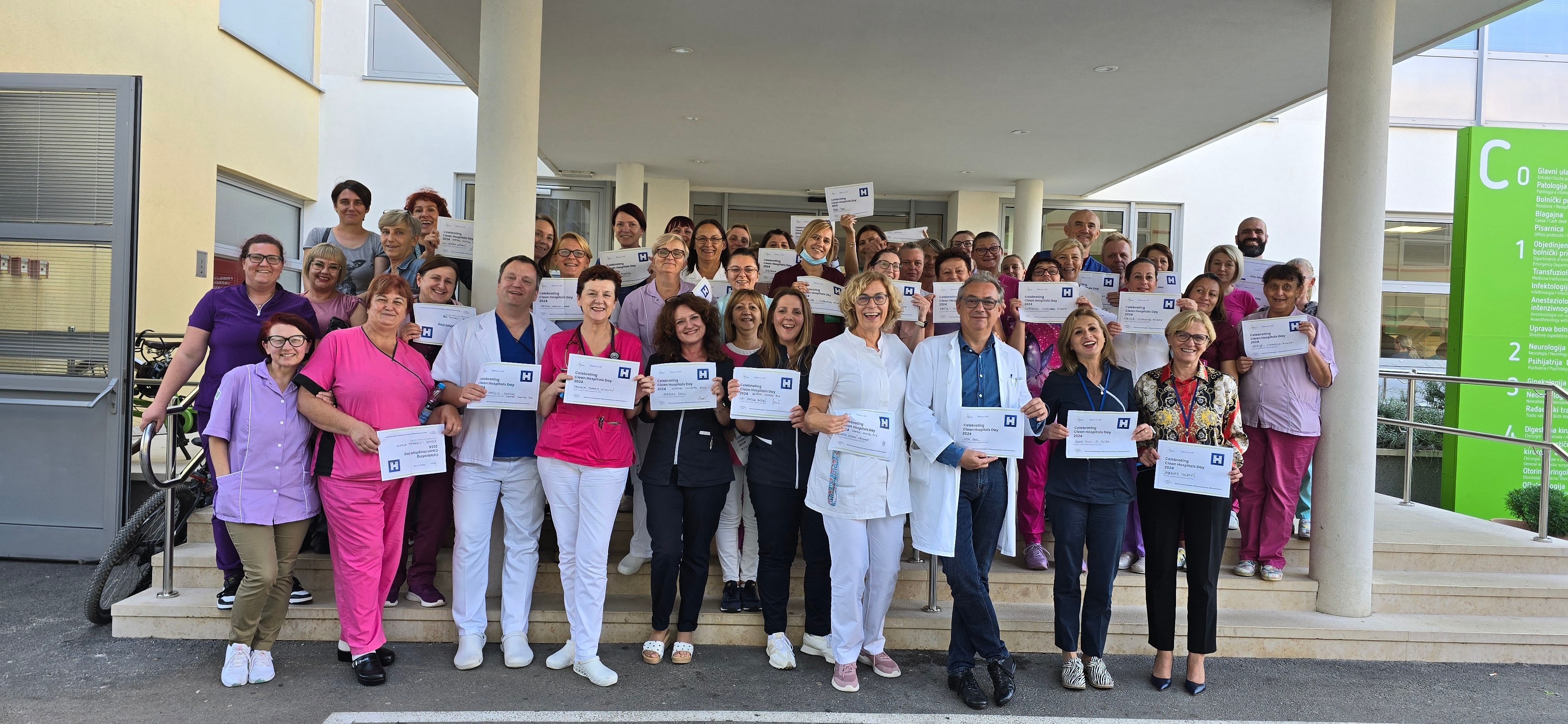
Considering my involvement in the educational program of TTT in HEH Clean Hospitals organization, I had a great desire to share knowledge, increase global visibility and recognition of the importance of environmental hygiene in the health care facility where I work and celebrate for the first time Clean Hospitals Day in Croatia.
ICT: How did your facility celebrate Clean Hospitals Day?
MM: On October 21, we celebrated Clean Hospitals Day at the Pula General Hospital. The hospital director, top management, and infection control team members attended the event and support celebration. Two lectures were held during the celebration: the importance of environmental hygiene in healthcare and the importance and role of cleaning staff in the health care system.
About 70 employees of GH Pula, both from health care and other professions, attended the celebration day. We celebrated this day for all employees who work in or are involved in environmental hygiene in the healthcare sector. That means all employees in cleaning services and environmental care in healthcare facilities, hospital stakeholders, management, health care workers, and our partners who manufacture products and technologies essential for environmental hygiene in health care facilities. We also celebrated for the patients because patient safety is invaluable. But we decided to dedicate this day above all to the employees of our facility, who are perhaps less visible but very important: our cleaning staff. At the end of the celebration, the event sponsor, Ecolab, prepared refreshments, coffee, juices, biscuits, and snacks, and we all socialized together. We also prepared special gifts for our cleaning staff.
General Hospital Pula celebrates Clean Hospitals Day in Croatia.
(Image courtesy of Martina Močenić)
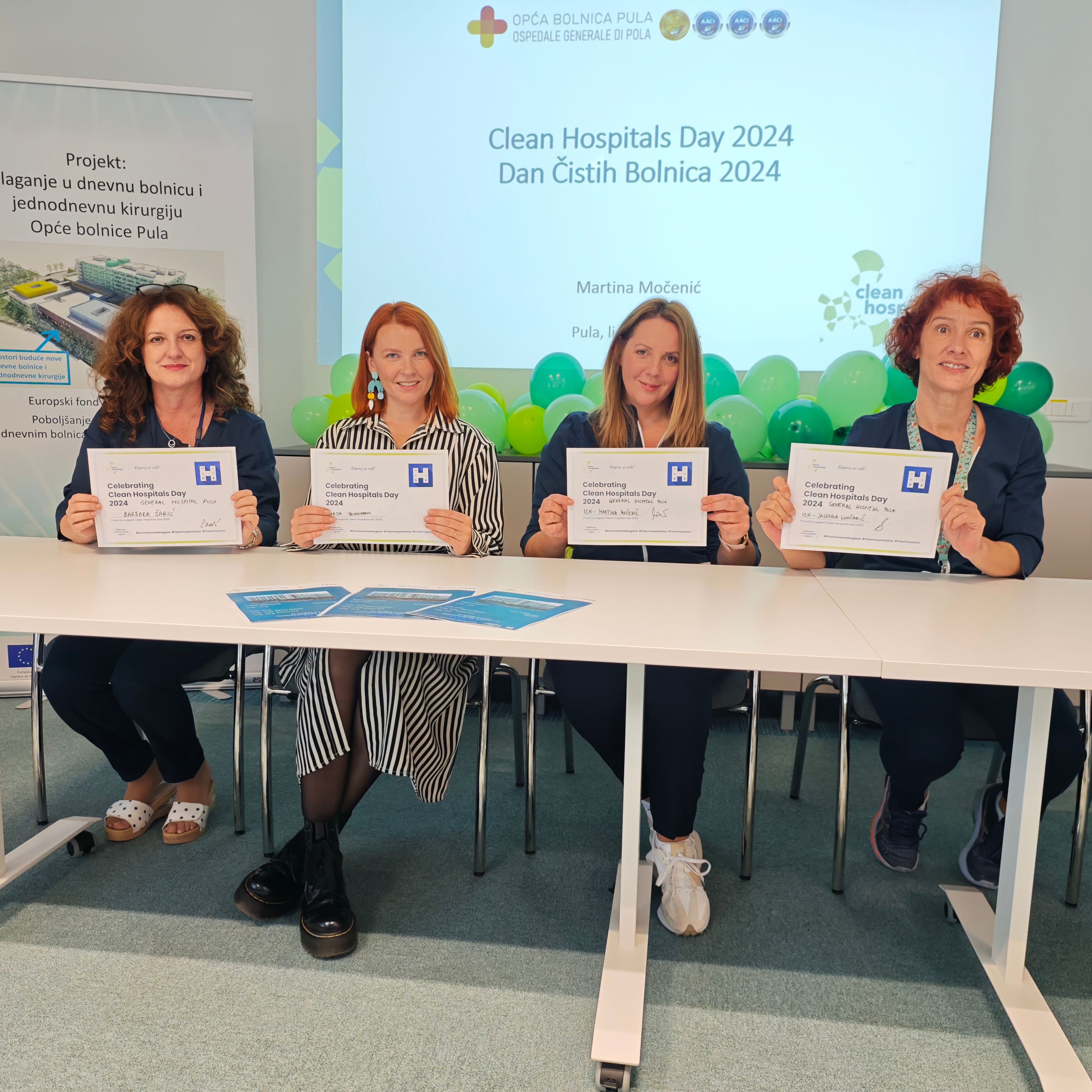
Seeing happy faces, red faces, crying eyes, and a lot of tears on the cheeks was a clear sign to me that I was doing the right thing. In the conversation with all of them, I felt a trembling voice, gratitude, and happiness for being appreciated. In today's working age, it is fortunate to still have staff who speak the same language, understand us, and have a great desire to learn and educate themselves. The cleaning staff's education will be a priority that I will focus on during the research I am conducting. Seeing the joy and satisfaction on their faces is a sign for us that we are on the right track.
ICT: How do you hope to continue this observance throughout the year?
MM: It is crucial to be present at workplaces and to know all cleaning staff well, including their names and abilities. This creates trusting relationships and 2-way communication, which is a prerequisite for success at all levels, including at HEH. No matter how ideal the technical components are, and no matter how modern the technology is, if the human factor is not involved and included, we are not in a good way. The training of cleaning staff and nursing staff in HEH will be the focus of our facility during the year.
Newsletter
Stay prepared and protected with Infection Control Today's newsletter, delivering essential updates, best practices, and expert insights for infection preventionists.